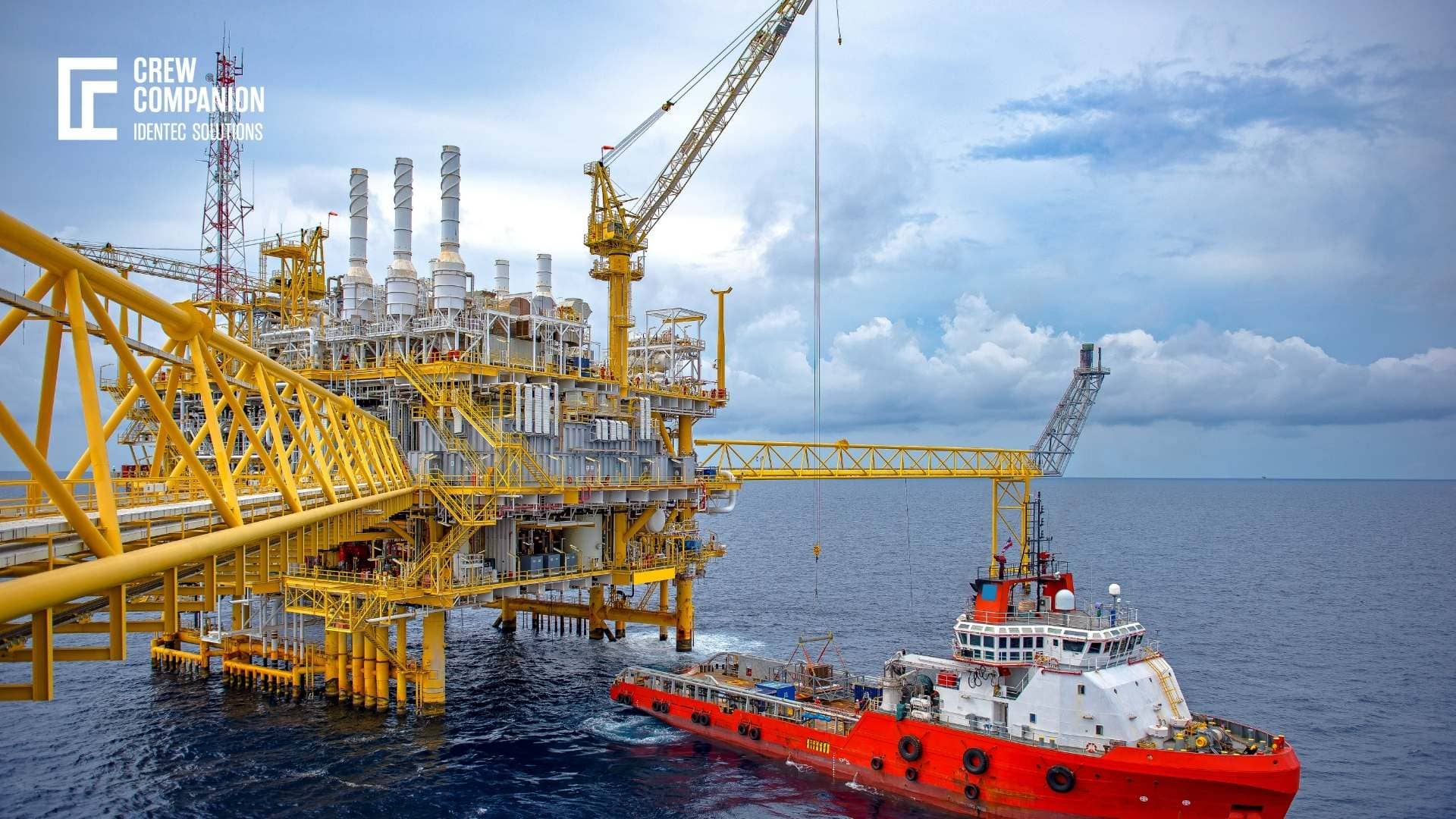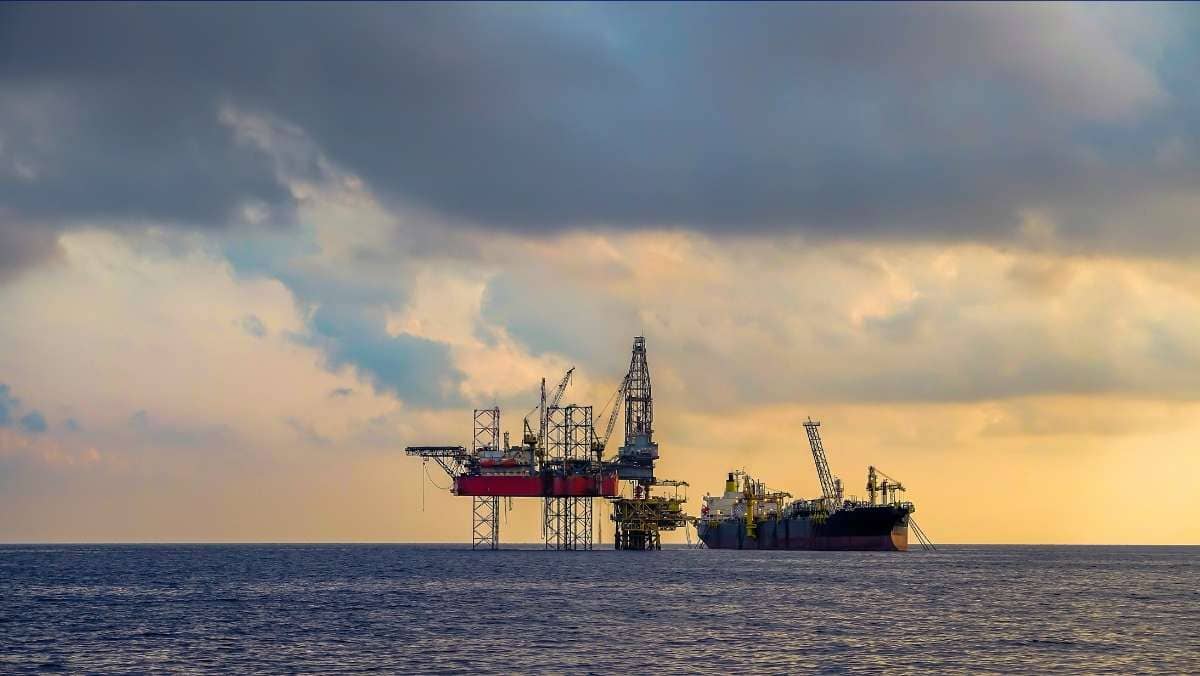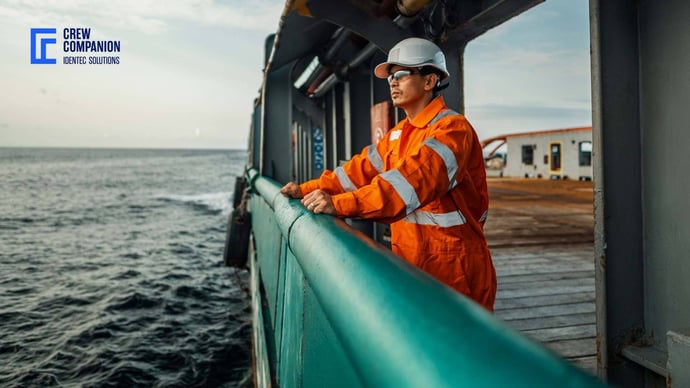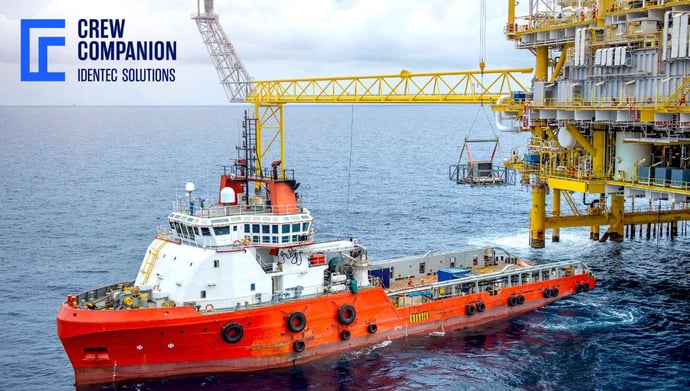How are transponders improving offshore HSE?
| Written by Mark Buzinkay
Transponders are expected to play a role in improving safety and efficiency offshore. The industry is forecast to grow significantly in the next decade as new regulations and standards are put in place. Transponders can offer several advantages to the offshore industry, particularly in health, safety and environment (HSE).

No video selected
Select a video type in the sidebar.
The benefits of electronic transponders for offshore HSE
Electronic transponders offer several benefits for offshore HSE. They can track personnel and equipment in real-time, monitor environmental conditions, and manage safety data. Transponders can also help improve compliance with HSE regulations.
Electronic transponders are expected to grow significantly in the offshore industry in the next decade. This is due to new regulations and standards that are being put in place. RFID technology is expected to play a role in improving safety and efficiency offshore. The industry is forecast to grow significantly in the next decade as new regulations and standards are implemented. RFID can offer several advantages to the offshore industry, particularly in health, safety and environment (HSE).
Some of the benefits of RFID for offshore HSE include the following:
- Improved safety and efficiency through real-time tracking of personnel and equipment
- Reduced risk of human error and incidents
- Enhanced situational awareness for better decision-making
- Greater compliance with HSE regulations
Improved safety and efficiency through real-time tracking of personnel and equipment
Tags can be placed on personnel and equipment, allowing real-time tracking. This is beneficial as it can help to improve safety and efficiency. In the event of an incident, the location of personnel and equipment can be quickly determined. This can help to reduce the time taken to respond to an incident, as well as the severity of the incident.
Another way transponders improve offshore HSE is through environmental monitoring. Transponders monitor various environmental conditions, such as temperature, humidity, and air quality. This information can be used to make sure that personnel are working in safe conditions. It can also help to identify potential hazards before they become a problem (see more about worker safety monitoring).
Reduced risk of human error and incidents and Enhanced situational awareness for better decision-making
RFID tags can help to reduce the risk of human error and incidents. This is because they can be used to track personnel and equipment in real time. This information can ensure that personnel are where they are supposed to be. It can also help to identify when equipment needs to be used properly. This information can lead to changes to procedures and training programs to reduce the risk of human error and incidents.
Enhanced situational awareness for better decision-making
RFID technology can provide enhanced situational awareness for offshore HSE professionals. This is because it can monitor personnel in real time, creating a digital map to display the current location of every member of your crew. This information assists in making better decisions about how to respond to an incident.
Greater compliance with HSE regulations
Transponders can help to improve compliance with HSE regulations. Due to automated monitoring, your POB list is always actual and 100% accurate. Additionally, you can adapt this information and use it to change procedures and training programs to improve compliance with HSE regulations. This includes an automated creation of a mustering report.
RFID is a versatile technology used in various ways to improve offshore HSE.

How transponders are transforming offshore HSE of workers
Transponders are often hailed as the future of offshore HSE. And it's not hard to see why. These devices have the potential to revolutionize the way we monitor and manage safety in offshore environments.
Traditional HSE methods can be time-consuming and impractical in busy offshore environments. Transponders offer a more efficient way to track workers' whereabouts and ensure they comply with safety procedures.
In addition, transponders can provide real-time data on environmental conditions, allowing for quick and informed decision-making in an incident. For example, imagine an emergency forcing the crew to abandon the ship.
Automated mustering using transponders is a new and efficient way to manage safety in offshore environments. This technology tells you quickly and easily about the whereabouts of workers in an area. In the event of an incident, your display will ensure that everyone is accounted for and safe. Additionally, this information can be used to make informed decisions about how to respond.
There is no doubt that transponders have the potential to transform offshore HSE. But before we can fully realize this potential, a few challenges must be addressed.
One of the biggest challenges is ensuring that transponders are correctly calibrated and maintained. If not, they could provide inaccurate data that could lead to dangerous situations.
Another challenge is ensuring that workers are adequately trained to use transponders. If workers don't know how to operate the devices properly, they could put themselves and others at risk. A smart design takes this into account and reduces potential misuse beforehand. The best transponder works without human intervention under all conditions.
Finally, we must ensure transponders are integrated into existing HSE systems and processes. If transponders are not used in conjunction with other safety measures, they could create new risks. The best way is to use a solution that combines hardware and software. It communicates through interfaces with all your other emergency response applications, e.g. access to your helipad and lifeboats.
Despite these challenges, there is no doubt that transponders have the potential to transform offshore HSE. With proper implementation and experienced suppliers, these devices could help to make our offshore environments safer for everyone.
Learn also more about walk-to-work.

The future of RFID and transponders in offshore HSE
Offshore HSE has been a topic of interest for many years, with various initiatives and technologies implemented to improve safety for workers in the oil and gas industry. One area that has seen recent advances is the use of transponders – small, wireless devices attached to workers or equipment – to help track your crew in real time.
There are a number of potential benefits of using transponders offshore, as mentioned above. As safety is based on safety culture, smart design, knowledge implemented in rules and personal experience, we must ensure that this knowledge is transferred to the new generation of offshore workers. Electronic mustering based on transponders is knowledge incorporated in rules, processes and embedded knowledge. Transponders assist muster officers and monitor the entire evacuation process, eventually providing valuable time for critical emergency tasks.
The safety of life and assets will become even more essential in times of scarcity. Transponders will be of great help to achieve zero harm on offshore platforms, especially during emergency mustering.
While the use of transponders is still in its early stages, there is potential for it to become a key part of offshore HSE. As the technology continues to develop, we will likely see more and more companies adopting transponders as part of their HSE strategy.
FAQ
How do transponders contribute to improving safety in offshore environments?
Transponders significantly enhance offshore HSE by providing real-time tracking and data management capabilities. By using RFID technology, transponders can monitor the location and movement of personnel and equipment, ensuring that workers are accounted for and positioned safely during operations. This capability is especially valuable in emergencies, where accurate and immediate tracking can reduce response times and mitigate the severity of incidents. Additionally, transponders can monitor environmental factors like temperature, humidity, and air quality, helping to pre-emptively address potential hazards. The automated mustering process offered by transponders ensures that workers are efficiently tracked and accounted for, streamlining evacuation procedures and allowing for informed swift decision-making.
What challenges need to be addressed for the effective implementation of transponders in offshore HSE?
While transponders have substantial potential to improve offshore HSE, several challenges must be tackled to ensure their effectiveness. Firstly, transponders must be properly calibrated and maintained. Malfunctioning or inaccurate data from poorly maintained transponders could lead to dangerous situations or a false sense of security. Secondly, comprehensive training is required so that workers can confidently operate these devices. If users are unaware of how to interact with transponders effectively, it could result in errors compromising safety. Lastly, transponders need to be seamlessly integrated into existing HSE protocols and systems. This means developing a solution synchronising with other emergency response technologies and processes, ensuring consistent and reliable safety measures across all operations. Addressing these challenges will facilitate the broader adoption of transponders, making offshore environments safer for all involved.
TAKEAWAY
There is no doubt that transponders have the potential to transform offshore HSE. With proper implementation and experienced suppliers, these devices could help to make our offshore environments safer for everyone. While the use of transponders is still in its early stages, there is potential for it to become a key part of offshore HSE in the future. As technology continues to develop, we will see more and more companies adopting transponders as part of their HSE strategy.
Do you think transponders could be the future of offshore HSE? Let us know your thoughts and contact us.
Dive deeper into one of our core topics: Personnel on board
Sources:
Note: This article was updated on the 5th of November 2024

Author
Mark Buzinkay, Head of Marketing
Mark Buzinkay holds a PhD in Virtual Anthropology, a Master in Business Administration (Telecommunications Mgmt), a Master of Science in Information Management and a Master of Arts in History, Sociology and Philosophy. Mark spent most of his professional career developing and creating business ideas - from a marketing, organisational and process point of view. He is fascinated by the digital transformation of industries, especially manufacturing and logistics. Mark writes mainly about Industry 4.0, maritime logistics, process and change management, innovations onshore and offshore, and the digital transformation in general.
Related Articles
Related Product






